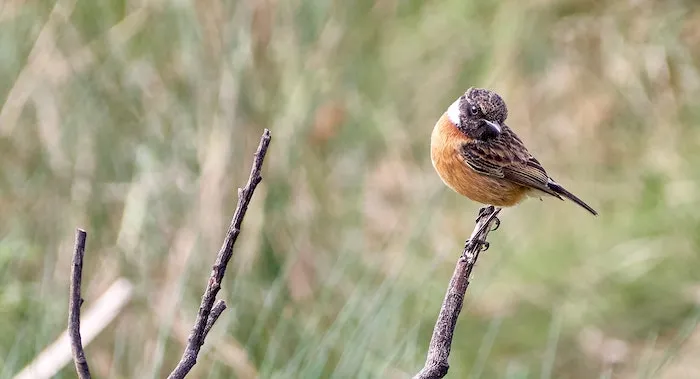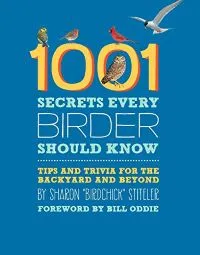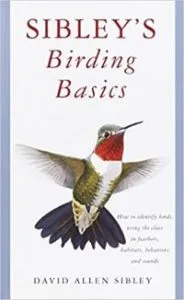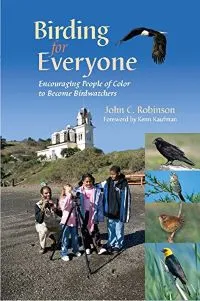
3 Books to Get You Started on Bird Watching
This content contains affiliate links. When you buy through these links, we may earn an affiliate commission.
One of my childhood homes had an aviary attached to it. My family lived in southern California at the time, a place with the perfect weather to have a bird as a pet. It was the size of a small shed and was on the side of the house. We inherited button quail and cockatiels. My father, a pilot in the US Air Force, loved birds, surprising no one. Keeping these birds inspired him to get an African Grey Parrot of his own. We kept him outside and my father diligently spent time training and bonding with the bird.
As military families are wont to do, it was time for us to leave California and move again. We came to Virginia and all our pets came with us. But in Virginia, a place with four seasons and one or two snow falls every year, my father couldn’t keep the bird outside. This is when we found out one of the primary functions of birds: to spread seed. Our house was a mess. Finally, when my mother started to develop allergies to the bird dander, which they spread almost as abundantly as they spread seed, she put down an ultimatum with my dad. It was her or the bird. Wisely, he chose his wife.
I’ve been fascinated with birds since and wasn’t quite sure how to have them in my life. From experience, it was obvious having a bird as a pet wasn’t realistic for me. I didn’t want an animal that was smart enough to plot my murder and could also fly. It also never felt right when I’d watch my dad snip our parrot’s flight feathers to keep it from being able to escape. Birds became another thing I enjoyed but didn’t take time to pursue.
This fall I heard about citizen science projects. This is where researchers take data collected by regular citizens to aid in their experiments. It’s especially helpful when researchers need a massive amount of data and aren’t able to collect the amounts needed alone. I found an experiment that tracked birds who visit feeders in the winter and fall months. Immediately I signed up, downloaded the app, and got to watching. This was a great place to start because it had lists of birds with their pictures so I could easily identify them. The specifications of the experiment, however, didn’t allow me to track birds outside my yard, and I was seeing so many more on walks with my dog that I was curious about.
Enter bird watching books. The apps are helpful and an okay place to get started. As with many things on the internet, I wasn’t getting complete enough information and didn’t have the vocabulary yet to find what I was looking for. Books, as usual, were the answer.
This book is excellent for basic birding information. Stiteler covers feeding, migration, baby birds, and has a section on the Cliff’s Notes of birding. It’s a little bit of information about a lot of things birding and a great place to build a foundation of knowledge. There’s also a guide to the bird watching year, which is helpful as you’re learning what types of birds to look for when.
A go-to guide on identifying birds. It’s beautifully illustrated and has been the authority on bird identification for years. In addition to pictures for identifying birds, Sibley gives helpful birding advice in 16 essays that accompany the guide. This is much more a guide for getting out in the field with binoculars than a watching out your window from the comfort of your couch kind of guide, but it’s full of reliable information and can be used while responsibly social distancing outdoors.
Once you’ve gotten into birding, you might want to find a community to share your new hobby. Robinson wants to make it easier for people of color to join. He starts by giving birding basics and how to become a birder and ends with a challenge. He pinpoints outreach programs and encourages mentorship among birders. White people, it’s our job to look around the rooms where we live and ask who’s missing and why. This book gives places where our hobby dollars can go to support diversity.
For me, it was citizen science that got me started on bird watching, but for you the stay at home order might be the thing to get you birding. It can be intimidating because there are thousands of species of birds and where do you even start? Who can tell the difference between a sparrow and a finch anyway? These three books are a great place to find answers. During this time, we shouldn’t leave our houses or neighborhoods in order to keep our communities safe. Bird watching is a low stakes, brain soothing hobby. This could be the perfect time to start.
 1001 Secrets Every Birder Should Know by Sharon Stiteler
1001 Secrets Every Birder Should Know by Sharon Stiteler
This book is excellent for basic birding information. Stiteler covers feeding, migration, baby birds, and has a section on the Cliff’s Notes of birding. It’s a little bit of information about a lot of things birding and a great place to build a foundation of knowledge. There’s also a guide to the bird watching year, which is helpful as you’re learning what types of birds to look for when.
 Sibley’s Birding Basics by David Allen Sibley
Sibley’s Birding Basics by David Allen Sibley
A go-to guide on identifying birds. It’s beautifully illustrated and has been the authority on bird identification for years. In addition to pictures for identifying birds, Sibley gives helpful birding advice in 16 essays that accompany the guide. This is much more a guide for getting out in the field with binoculars than a watching out your window from the comfort of your couch kind of guide, but it’s full of reliable information and can be used while responsibly social distancing outdoors.
 Birding for Everyone by John C. Robinson
Birding for Everyone by John C. Robinson
Once you’ve gotten into birding, you might want to find a community to share your new hobby. Robinson wants to make it easier for people of color to join. He starts by giving birding basics and how to become a birder and ends with a challenge. He pinpoints outreach programs and encourages mentorship among birders. White people, it’s our job to look around the rooms where we live and ask who’s missing and why. This book gives places where our hobby dollars can go to support diversity.
For me, it was citizen science that got me started on bird watching, but for you the stay at home order might be the thing to get you birding. It can be intimidating because there are thousands of species of birds and where do you even start? Who can tell the difference between a sparrow and a finch anyway? These three books are a great place to find answers. During this time, we shouldn’t leave our houses or neighborhoods in order to keep our communities safe. Bird watching is a low stakes, brain soothing hobby. This could be the perfect time to start.











